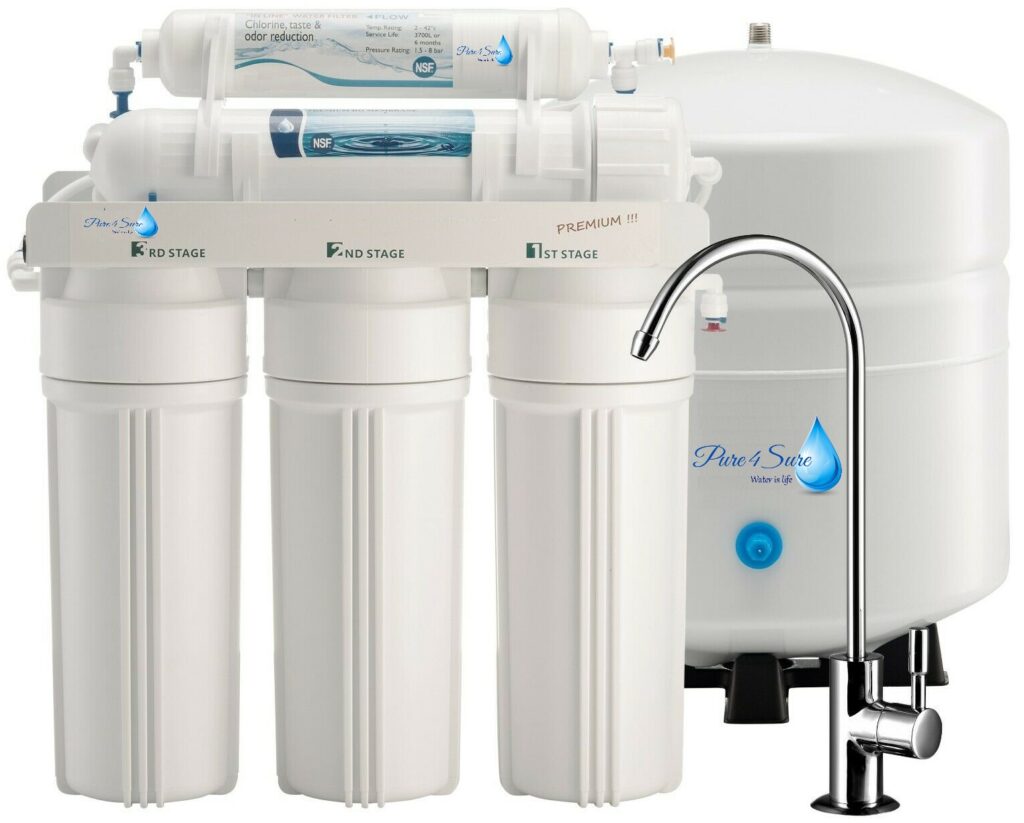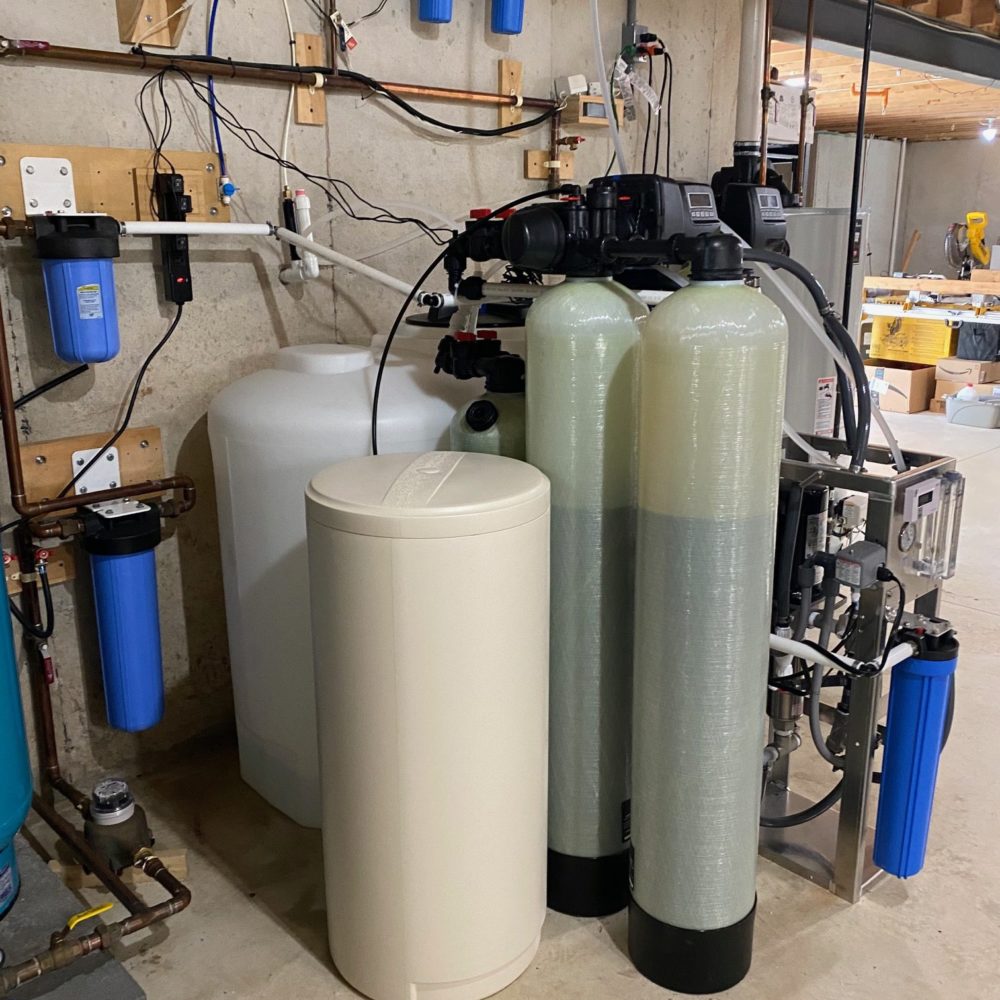Table Of Content
- So, Which Whole House Water Filter Do We Recommend?
- The Best Air Purifiers for Mold That Improve Air Quality
- System & Filter Quality
- Flow rate
- 📑 Reverse Osmosis Water Requirements
- Buying Guide To Reverse Osmosis Systems
- With The Culligan Aquasential Smart Series Water Filters You Get:
- Waterdrop G3P800 8-Stage Tankless RO System

Most manufacturers recommend that you clean your membranes every three to six months. Generally, sediment filters need to be replaced every three to six months, while carbon filters can last two years. Therefore, it is essential to check your filters regularly and return them to keep your whole house’s reverse osmosis system working properly. The whole house reverse osmosis system is a big investment, but it is an investment in your health and your family’s health. If you consider installing a whole house reverse osmosis system, keep in mind the cost and the maintenance required. If you have hard water, it is recommended that you also install a water softener.
So, Which Whole House Water Filter Do We Recommend?
It is our top choice since it has an excellent flow rate in addition to providing extraordinarily pure water. Think about how often you'll need to change the filters and how much care the system will require before deciding on a RO system. Choosing a system with inexpensive, easily replaceable filters ensures a smooth and economical maintenance plan, which contributes to the long-term performance of your RO system. If you're unsure when you should change your unit's filter, consider a reverse osmosis system, like the Waterdrop Tankless 400, which has filter life readings. Ultimately, the decision hinges on your specific water quality issues, priorities and long-term household needs.
The Best Air Purifiers for Mold That Improve Air Quality
This three-stage RO system removes the most common contaminants from drinking water and also has a 5-gallon storage tank, although it takes up more space under the sink. The system takes up more space than some other options due to its larger storage tank. In addition, no data is available from the manufacturer on wastewater production. If you’re interested in an efficient reverse osmosis system that minimizes water waste, other options may be a better fit.
System & Filter Quality
Other systems cost $1,000 or more and will require professional installation. On average, a whole house water filtration system costs $2,000 to be installed. However, some of the higher-end models will need professional installation. Anytime you’re dealing with water, you’ll want to make sure you know what you’re doing because any error can lead to catastrophic damage to your home. A huge benefit of most RO systems is that they have a water storage tank, which means that you get instant access to clean drinking water whenever you need it. Some water systems, such as pitcher filters, have a wait time of up to 15 minutes for access to one batch of drinking water, but reverse osmosis is immediate.
In either case, it makes sense to invest in a whole home RO system for your peace of mind. You can then be sure that you’re drinking the safest and cleanest possible water. Even for families who are connected to the municipal water supply, the concerns about the purity of the water which reaches your faucet are very real. Chlorinated water, for example, is very common and it can spoil the taste of food and drinks made using water from your kitchen faucet. The primary reason that most people opt for a whole house reverse osmosis system is because they’re worried about the quality of the water from their faucet.
During the first stage of water filtration, you can count on this whole house reverse osmosis system removing tiny particles. That level of filtration ensures that your water comes out clear and that your water filter system doesn’t clog. If you are on the fence about whether or not to install a whole house reverse osmosis system, consider your needs and priorities. If you have a family and want to ensure that everyone has access to clean, safe water, a whole house system is a great option.

If you have very hard well water or iron-rich well water, you probably already know that simple whole-house water filtration systems aren’t enough. Systems intended for municipal water often fail to remove hydrogen sulfide or reduce TDS to an acceptable level. Welcome to my guide to choosing the best whole house reverse osmosis system for well water. The system’s six stages remove contaminants and 99 percent of bacteria while also adding essential healthy minerals and calcium. A flow restrictor and automatic shut-off valve keep wastewater production to 3 gallons for every 1 gallon of treated water. This system does use a 15-inch long by 11-inch wide 4-gallon tank, so make sure you have plenty of space under your kitchen sink.
Although chlorine has long been used to disinfect water in treatment facilities, it may actually be bad for your health. There have been recent studies which have shown that drinking a lot of chlorinated water could damage your health. If you’ve decided that a whole house model is for you, you’ll need to be aware of which features to look out for before you buy, otherwise you could end up making an expensive mistake. This system is made from a highly durable polypropylene to ensure a long lifespan and excellent robustness and since the system is completely tankless it’s much more convenient to use in a domestic setting. We’ll tell you which features to look out for, which brands are leading the way and which systems are the most reliable so you can avoid making an expensive mistake. We take a close look at 3 of the market leaders and see which comes out on top.
Filter lifespan & capacity – This model has a 1,000,000 gallon capacity, which is a filter life of about 10 years depending on your water usage. If you have a home with a private well, then this Springwell whole-house water filter is a great choice. Constructed in the USA, this filter system offers a lifetime limited warranty and is touted for its easy installation process. These are the five criteria we used to evaluate each whole home water filtration system, and they’re the main things that will determine if a system is right for your home. The first thing we love about this system is that it reduces contaminants in your water by up to 99.99%. Examples of those impurities include asbestos, calcite, chlorine, cyanide, fluoride, giardia, heavy metals, pharmaceuticals, radium, and other contaminants in your water.
We stay at least 3-4 feet away from the customers and maintain strict physical distancing. We assure you that the work will be carried out with utmost care and remain dedicated to the health and safety of your family and staff. If you have a private well or are on a city water system, you may be wondering if you need a whole house reverse osmosis (RO) filtration system.
Not all types of in-home water filters completely get rid of toxic PFAS - The Fayetteville Observer
Not all types of in-home water filters completely get rid of toxic PFAS.
Posted: Wed, 05 Feb 2020 08:00:00 GMT [source]
If you want the best whole-house filter system for city tap water at an affordable price, go with the SpringWell CF1 model. See our guide on determining if you need a whole house water filter for more information. Water softeners are point-of-entry systems that remove total dissolved solids (TDS) from the water like calcium and magnesium, which prevents scale buildup. That will keep the flow high enough to meet your needs on appliances like the washing machine and shower while still providing the cleanest drinking water at your kitchen tap. For instance, a portable water filter for hiking and camping has low micron ratings – down to as small as 0.1 microns.
Dirt/sediment filters can be purchased relatively cheaply, and we'd recommend running one before this unit so that you reach the full lifespan of its filters. If you include all of the options in your system, the installation costs rise to $1,000 to $5,000. Much of these costs depend on the size of your house, your plumbing configuration, how much additional piping is required, and a lot of other factors. If your home requires additional piping or replacing copper lines with PEX, you can expect to pay substantially more for installation.
With that in mind, you need to be selective about when to use water from the RO tap. Before purchasing a reverse osmosis system, it’s essential to consider a few plumbing factors. Because it uses multiple filters and a large storage tank, a reverse osmosis system takes up a lot of real estate. And if you have a garbage disposal, it may be challenging to fit a reverse osmosis system below the sink. The AquaTru countertop water filtration system allows for filtered water without taking up space under the cabinet and eliminates the need for DIY installation.
A pH adjuster can also be used to make sure the water is balanced correctly. Another common thing followed after RO is a UV purification system to make the water bacteria-free. Unlike other RO water systems which use only three or four filtration stages, the iSpring RCS5T utilizes five steps to remove up to 99% of water contaminants. This ensures that your family will only use and consume safe and clean water.
An under-sink reverse osmosis system such as the APEC ROES-50 offers you out-of-sight filtration with on-demand filtered water from a countertop faucet dispenser. This popular pick stands out for its straightforward operation, sizable storage tank, and five-stage filtration. According to the manufacturer, it removes 93 percent of fluoride, 95 percent of iron, and 96 percent of lead and copper. You can expect each filter to last six to 12 months, with the reverse membrane filter and carbon filters lasting up to four years before needing replacement. Most commercial RO systems and commercial water filtration systems are tankless, meaning, your water is filtered on demand. In this case, you need to know the amount of clean water produced within a specific period of time.
Customers have reported issues with the canister and the bypass relief valve breaking down. To protect the filters and RO membrane from the world outside, filter housing is used to encase the entire system. This refers to the Total Dissolved Solids in drinking water with your RO system and accounts for 10% of the score. This Old House has empowered homeowners and DIY-ers for more than four decades with top-notch home improvement advice in the form of television programs, print media, and digital content. Those which don’t are on demand systems, and while they’re easier to store in your home there will often be a delay when turning on your faucet.

No comments:
Post a Comment